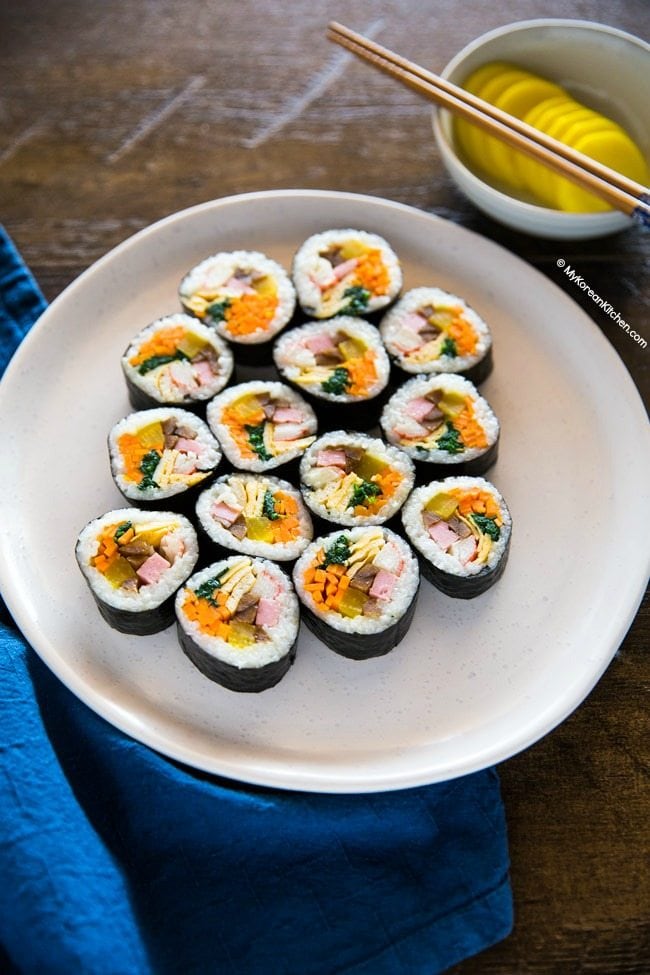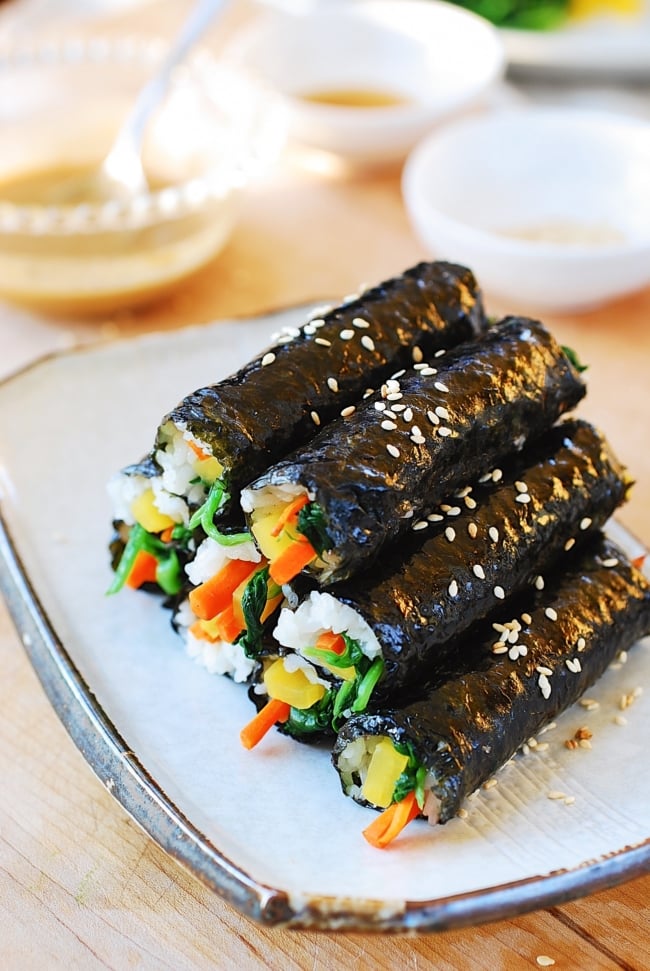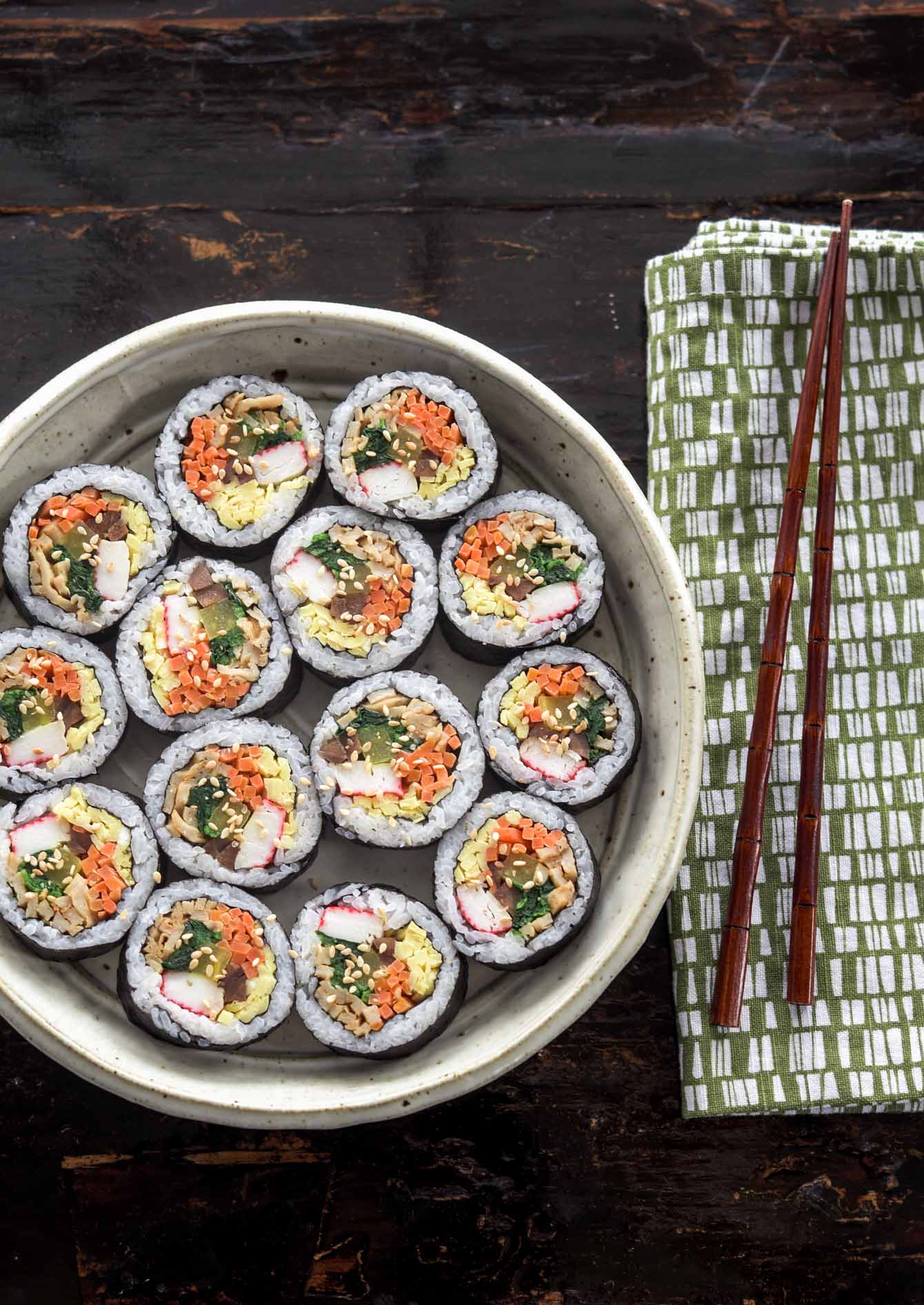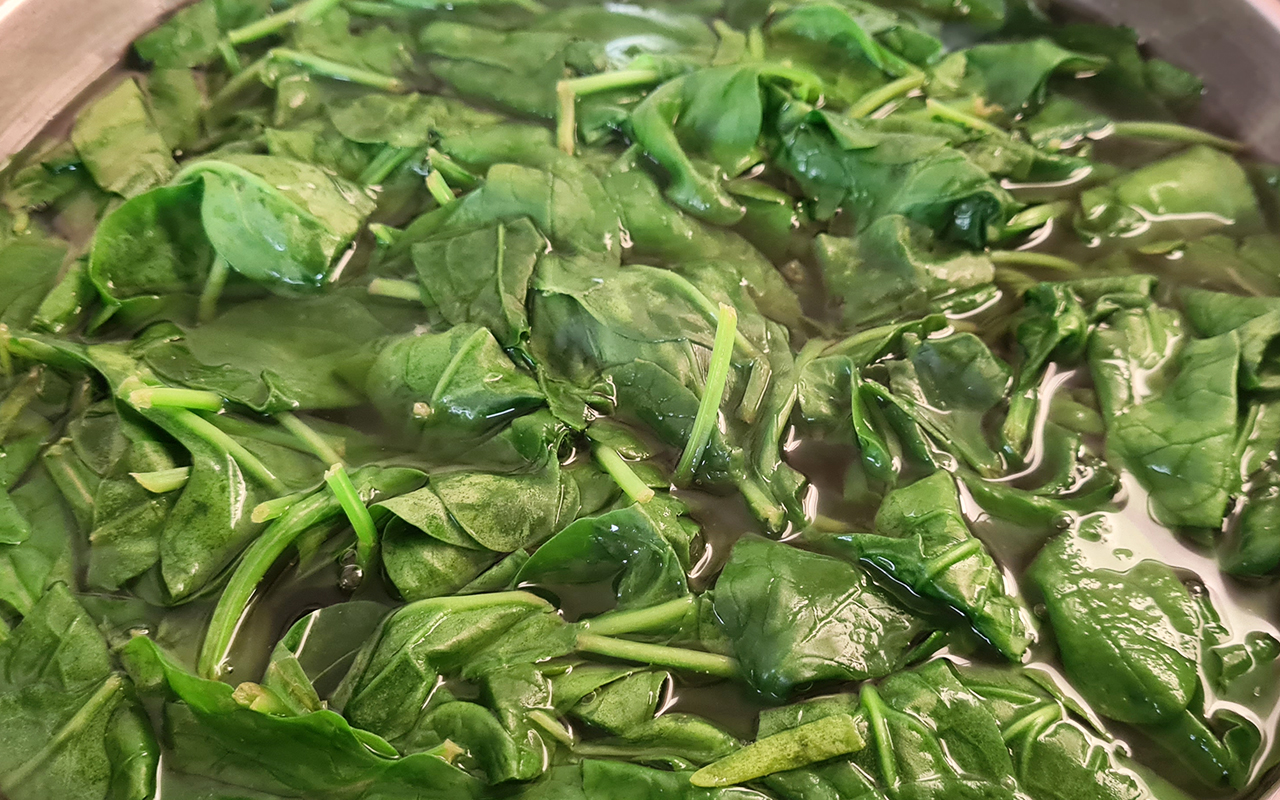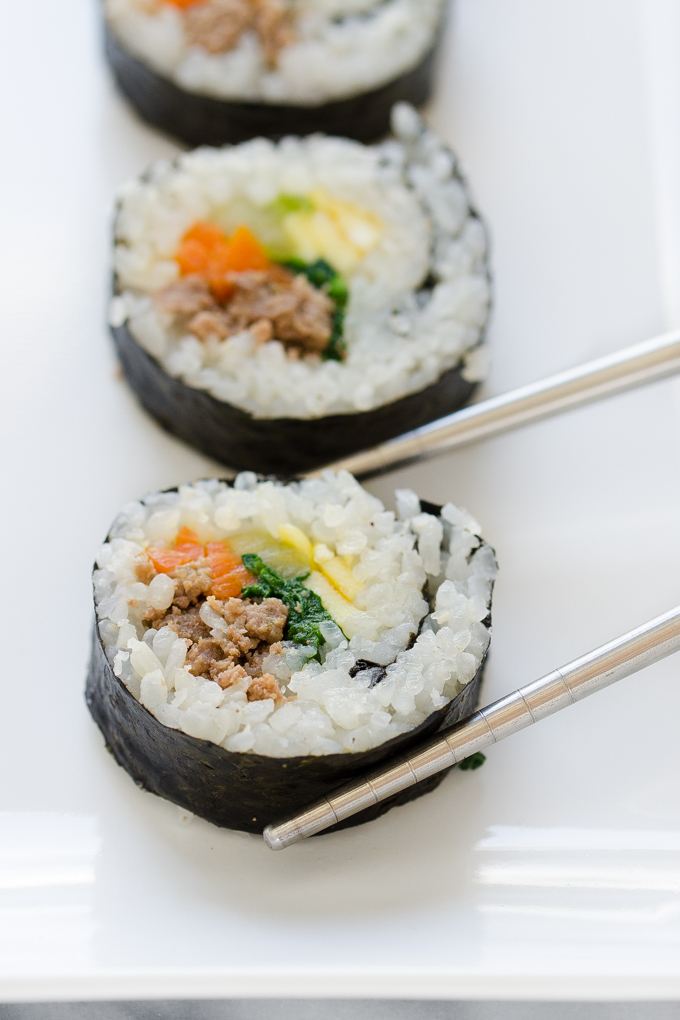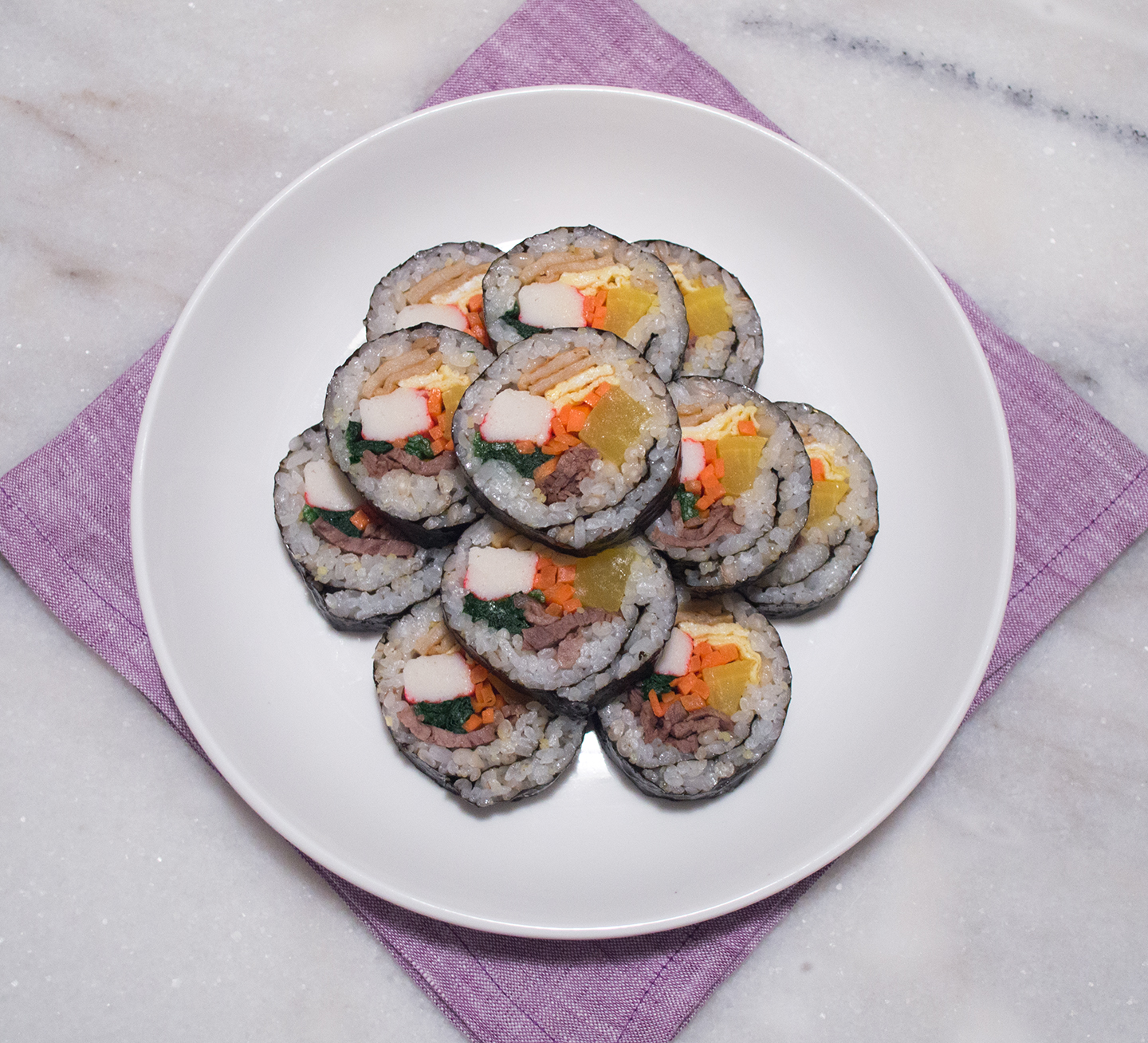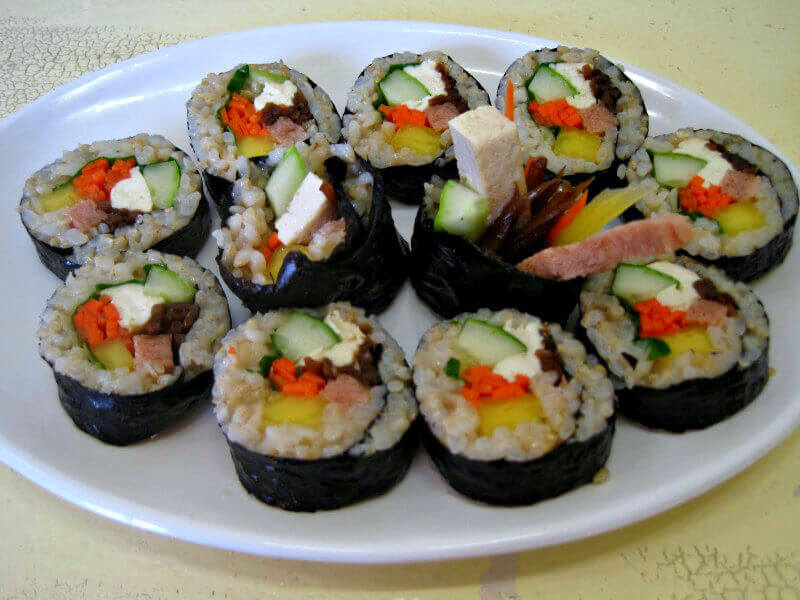Gimbap
김밥, kimbap
Gimbap , also romanized as kimbap, is a Korean dish made from cooked rice, vegetables, and optionally cooked seafood or meat, rolled in gim—dried sheets of seaweed—and served in bite-sized slices. The origins of gimbap are debated. Some sources suggest it originates from Japanese norimaki, introduced during Japanese colonial rule, while others argue it is a modernized version of bokssam from the Joseon era. The dish is often part of a packed meal, or dosirak, to be eaten at picnics and outdoor events, and can serve as a light lunch along with danmuji (yellow pickled radish) and kimchi. It is a popular takeaway food in South Korea and abroad and is known as a convenient food because of its portability. Gim (김) refers to edible seaweed in the genus Porphyra and Pyropia. Bap (밥) broadly refers to cooked rice. The compound term gimbap is a neologism; it was not a part of the Korean language until the 20th century.
Source: Wikipedia

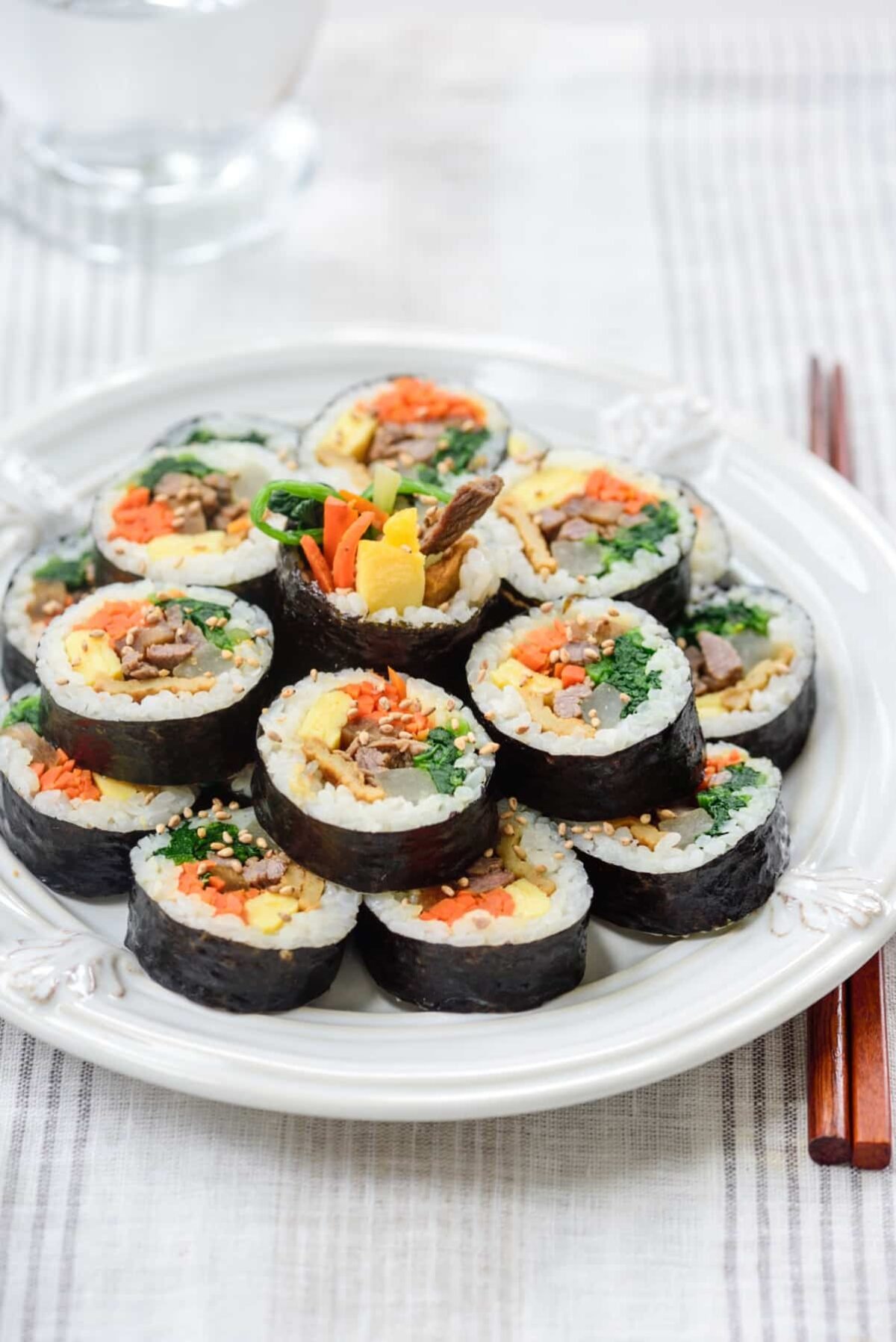
:max_bytes(150000):strip_icc()/kimbap-korean-sushi-rolls-2118795-Hero_01-2453c846edd1449ab87c26761be72064.jpg)

:max_bytes(150000):strip_icc()/__opt__aboutcom__coeus__resources__content_migration__serious_eats__seriouseats.com__2020__01__20200122-gimbap-vicky-wasik-24-f5ed1075f35846a29e0812ee053a1bf8.jpg)


